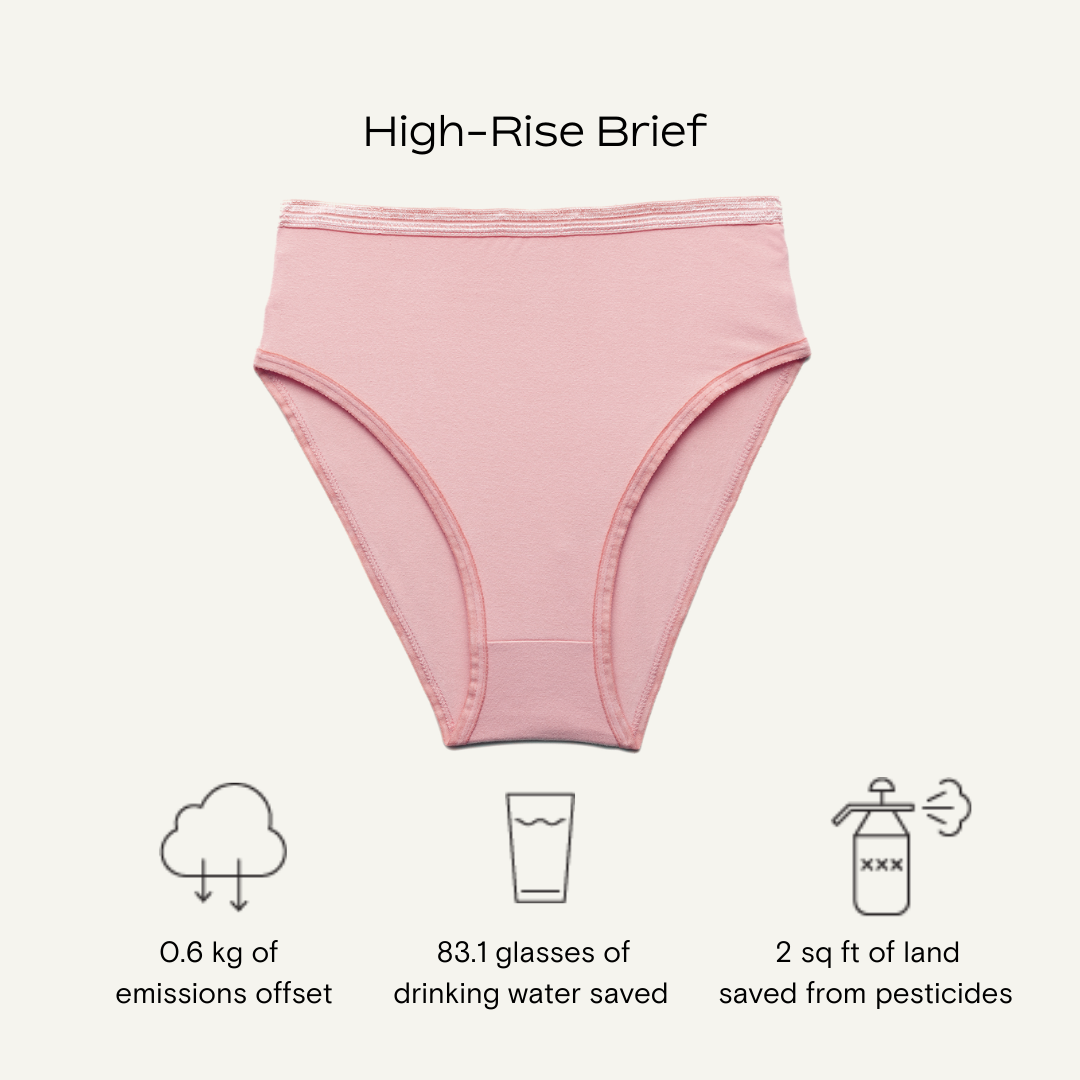
In a world that’s often filled with unnecessary toxins—in our products, our relationships, even our thoughts—it’s time to detox. Subset’s new Quartz color collection celebrates softness, strength, and clarity, much like its crystal namesake. But why stop with your wardrobe? This season, we’re taking a stand for all things non-toxic—from your underwear drawer to your self-care rituals.
Whether you’re treating yourself or shopping for someone who deserves a little extra love, this gift guide is packed with sustainable, non-toxic, and meaningful finds. Because we prefer products much like we prefer our relationships: non-toxic.
The Quartz Collection: A Hug You Can Wear
Let’s start with the foundation of it all: you. Our Quartz collection brings a soft pink hue to our much-loved line of organic, non-toxic innerwear. It’s the kind of color that feels like a deep breath or a quiet moment, and it’s designed to pair beautifully with everything: from cozy weekend sweats to your favorite sustainable denim.
Made with GOTS-certified organic cotton, Subset’s innerwear is free from harmful chemicals and dyes, making it as kind to your skin as it is to the planet. Each piece feels like a gentle reminder to prioritize yourself: soft, supportive, and completely uncompromising. It’s more than just underwear—it’s a declaration of self-love.
So, while you’re slipping into something that treats your skin with care, why not extend that philosophy to the rest of your life?
Below, we’ve curated a list of gift ideas [that we’re in love with] to help you or your loved ones live a little softer, a little clearer, and a lot less toxic.
Non-Toxic Gifts That Keep Giving
1. A Weighted Blanket That Feels Like a Hug![]()
![]()

- Product Pick: Bearaby Cotton Napper
- Why It’s Non-Toxic: Made from organic cotton and free from synthetic fillers, this weighted blanket delivers comfort without compromise. Perfect for grounding yourself after a long day.
- Self-Love Spin: Cozying up under a weighted blanket is a reminder to pause, breathe, and prioritize your well-being.
2. A Candle That Won't Pollute Your Air

- Product Pick: Primally Pure Candles [Sweet Floral Sage scent]
- Why It’s Non-Toxic: Made with clean-burning beeswax and housed in recycled glass jars, their candles are free from chemicals and fragrances. We also love their recycling program [reminds us of ours!]
- Self-Love Spin: Lighting a candle sets the mood for mindfulness. This one creates a toxin-free space to find your calm, reflect and recharge.
3. A Water Bottle That’s Better for You and the Planet

- Product Pick: Aarke Stainless Steel Bottle
- Why It’s Non-Toxic: Stainless steel keeps your water clean and crisp, without leaching harmful chemicals like PFAs or microplastics. We like using this one as our go-to water source, carbonated or not.
- Self-Love Spin: Staying hydrated is a simple but powerful way to care for yourself, and this chic bottle makes it feel luxurious.
4. Clean Skincare That Actually Works

- Product Pick: Herbivore Phoenix Rosehip Face Oil
- Why It’s Non-Toxic: Herbivore’s skincare gives your skin a beautiful, radiant glow with all-natural ingredients. And it feels great on your skin.
-
Self-Love Spin: Enhance your natural beauty without masking it. Because your skin deserves the same love you give everyone else.
5. Non-Toxic Innerwear That's as Honest as You Are
- Product Pick: Subset Quartz Triangle Soft Bra & Mid-Rise Bikini
- Why It’s Non-Toxic: GOTS certified organic cotton, ethically made, and dyed without harmful chemicals—this is innerwear that puts you first.
- Self-Love Spin: Nothing says “I care about myself” more than upgrading your most basic layers to soft, safe and sustainable styles in the sweetest hue.
The Power of Non-Toxic Choices
When you surround yourself with products that are as intentional as Subset’s organic cotton collection, you’re making a statement: you’re worth it. Non-toxic choices aren’t just about avoiding harm—they’re about embracing care, clarity, and love in every area of your life.
This Valentine’s season, let’s give gifts that truly nurture. Whether it’s the perfect pair of organic cotton briefs or a touch of blush that shows off your inner glow, these gifts are more than just gestures—they’re tools for living with love and intention.
Slip into a Quartz Essential Robe, light a fragrance-free candle, and pour yourself a mindful matcha. Here’s to safe fabrics, soft moments, and a life free from the toxic stuff—because you deserve nothing less.
]]>

































